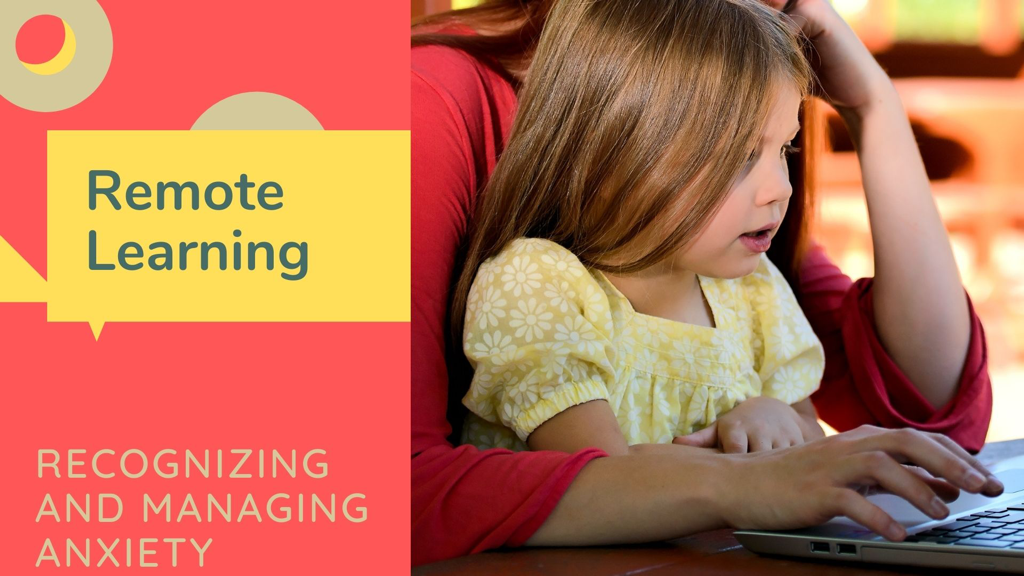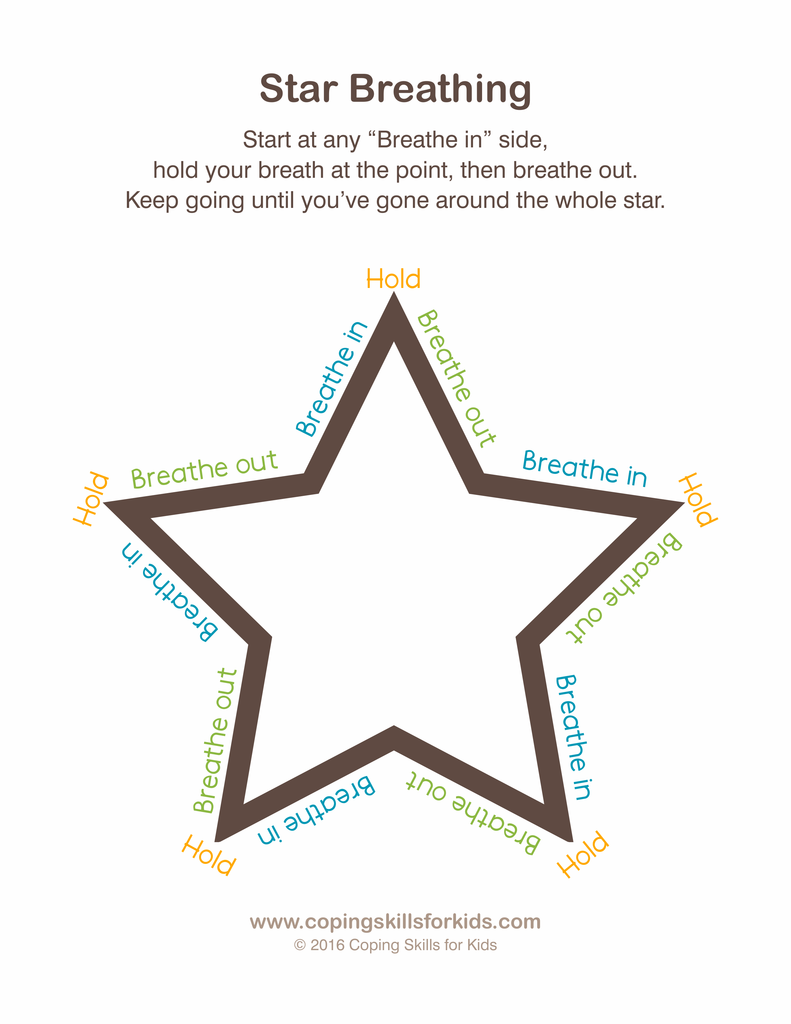|
It is no secret that 2020 has been a year full of challenges and a new normal. Among the many interesting situations we have faced during this global pandemic, virtual schooling or remote learning is among the most frequently discussed. Parents and teachers alike recognize that there is no easy solution for a safe educational environment this school year. Children and adults alike may experience new or heightened anxiety during this time. There have been numerous reports about a rise in the number of people seeking mental health services or treatment in the past few months. If you are included in those numbers, the first thing to remember is you are not alone. Many are feeling isolated, confused, frustrated, uncertain and maybe even a little scared. We would like to provide information about signs and symptoms of anxiety, how to address anxiety with your child, and steps your child can take to cope with anxiety. The signs and symptoms of anxiety will look different for every child. Some level of anxiety or nervousness is normal. For example, it is normal and expected to feel nervous before a school play or before taking a test. When your child is worried all the time or when their anxiety is disproportionate to the particular situation, they may have an anxiety disorder. A few symptoms to look for in your child are (Chung, 2019): • Trouble falling asleep • Fear of being alone • Frequent urination • Being overly self-critical • Frequent headaches or stomachaches • Picking at skin • Strong startle response • OCD-like behaviors (i.e. arranging objects “just so”) Please note that some medical conditions can mimic some anxiety symptoms so a physical is always a good idea as it can rule out such conditions. Remember that noticing a few of these symptoms in your child is no cause for alarm unless it interferes with their ability to function on a daily basis. This does not mean you cannot talk to your child about what they are feeling or what they are worried about. Acknowledging their feelings goes a long way. As parents, we do not want to see our children in distress and our first instinct may be to rush to reassure them. However, doing so can have the effect of invalidating their feelings or making them feel like they’re not normal for feeling that way. Instead, try to resist this urge and let your child know that most people are probably feeling the same way as them right nowabout remote learning. Actively let your child know that you are there for them if they are worried or need help rather than waiting for them to come to you. If they do come to you, actively listen to what they have to say (Mendelson, 2020). Routines are a great way to help reduce anxiety. Children thrive when they know what to expect and routines provide a prompt for children to know what comes next. A routine does not have to be a strict schedule to be effective. Waking, eating and completing school work at roughly the same time each day will help establish your routine. Remember to work in breaks as well. Taking small, frequent “brain breaks” where you stretch, walk around the house, listen to a song or get a drink of water can help you to refocus. Another tip is choosing an environment or space for learning separate from areas where you normally relax such as your bedroom or living room. Mixing the two can promote anxiety and make it harder to relax at night. If possible, bring your child to the store to pick out supplies so they can get excited about school. Check out this article for more learning tips: https://ectutoring.com/how-to-help-your-child-with-screen-anxiety-in-distance-learning. Addressing anxious thoughts or worry with your child can be difficult. If you arm yourself with calming phrases, you may find it easier to help your child more effectively in the moment. A few you may use are: • “I love you. You are safe.” • “If how you feel was a monster, what would it look like?” • “Let’s put your worry on the shelf while we (listen to your favorite song, read a book, run around the block). Then we’ll pick it back up again.” • “This feeling will go away. Let’s get comfortable until it does.” • “I get scared/nervous/anxious sometimes too. It’s no fun.” • “Tell me the worst thing that could possibly happen.” • “Tell me about it.” (Then listen without interrupting). Find a list of phrases and strategies here: https://gozen.com/49-phrases-to-calm-an-anxious-child/ Did you know there are books about anxiety for children? These are wonderful tools to help start the conversation with your child. A few recommended books are: • Right now, I am fine by Daniela Owen • Anxious Ninja by Mary Nhin • a kids book about anxiety by Ross Szabo • Worry Says What? By Allison Edwards When your child is feeling symptoms of anxiety, we have a few tips to help them regain control. A good place to start is to have them squeeze a stress ball, play dough or silly putty. Ask your child to imagine their favorite place. This gives them something to focus on and also causes them to use a different part of their brain than where the worried thoughts are forming. They can also think of their favorite things. For older children, you can ask them to name animals alphabetically. One well-known, effective technique for coping with a panic attack is 54321 grounding. This uses all five senses. Ask your child to take one deep belly breath and do the following: • Look around for 5 things they can see and say them out loud • Pay attention to your body and think of 4 things you can feel and say them out loud • Listen for 3 sounds and say them out loud • Say 2 things you can smell • Say out loud 1 thing that you can taste • Take one more deep belly breath After completing these steps your child should feel calmer and more focused. Taking deep breaths is another way to calm your child’s anxiety. You can have your child place their hand on their belly and take a breath. When they feel their belly rise, they will know they are taking a deep breath. Do this at least 5 times or until the anxiety passes. The “star breathing” technique(pictured below) may be helpful for younger children. Feel free to practice these techniques for yourself when needed as well. As always, if you feel that you or your child need additional help please reach out to us. Our therapists are here to offer strategies and techniques to help your child succeed this school year.
References: Chung, F. (2019). Symptoms of anxiety disorder in children. Retrieved from https://www.additudemag.com/anxiety-disorders-in-children-symptoms/. Mendelson, J.(2020). Strategies for managing remote learning stress & separation anxiety for caregivers and students. Retrieved from https://www.conehealth.com/services/behavioral-health/strategies-for-managing-remote-learning-stress-
1 Comment
7/20/2021 23:26:35
My sister would like to try the therapy since this type of treatment may help ease her anxiety and depression. Anyhow, you are also right that this should be combined with regular exercise. Thank you for clarifying here as well that people with anxiety have a fear of being alone, and that is why they will need all the help we can get.
Reply
Your comment will be posted after it is approved.
Leave a Reply. |
Archives
March 2024
|

